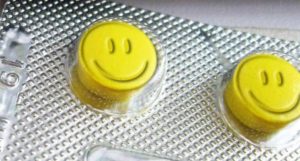How to apply Positive Psychology to realise meaningful change

The field of Positive Psychology is gaining more and more traction across diverse industries and organisations. What is it and is it really all that it is cracked up to be, the answer to the age old human dilemma of how to be happy? Don’t we all just want to be happy?
What is Positive Psychology?
Let’s start with what it is not. Positive Psychology is not positive thinking, being happy all the time, a quick fix, a self-development movement or “putting it out to the Universe”. The field of Positive Psychology is defined as “the scientific study of human flourishing and an applied approach to optimal functioning… the study of the strengths and virtues that enable individuals, communities and organisations to thrive” (Positive Psychology Institute). Positive Psychology shifts the focus from what is clinically wrong to the promotion of wellbeing and the creation of a satisfying life filled with meaning, pleasure and accomplishment. Human strengths are viewed as buffers in a Health rather than Illness model of wellbeing.
Martin Seligman, a previous Thinker in Residence for Adelaide, is commonly regarded as the founder of Positive Psychology. He conceptualised the PERMA model or 5 planks to realise improved wellbeing and positive mental health.
The PERMA model is grounded in the science of neuroplasticity. Our brains are capable of forming new neural connections through repeated experience. We are biologically programmed to filter for the negative, as a primitive survival response to detect and avoid threat. A conscious and consistent focus on generating positive experiences helps to counteract this negativity bias. Happiness is a work ethic and our brains require training.
Happiness is a mental or emotional state of wellbeing characterised by positive or pleasant emotions ranging from contentment to intense joy. Seligman’s definition of happiness is not short-term, hedonistic pleasure but a more enduring concept of contentment, wellbeing and resilience. Positive Psychology believes that broad-based happiness does more than make a person feel good. Happiness actually drives a person to be more creative, productive, successful, and healthy. In that sense, positive emotions are a core building material for human wellbeing, not a window dressing.
How to apply PERMA
- Consciously generate more Positive Emotions – work on increasing your positivity ratio (number of positive comments versus number of negative comments), sharing good news and looking for the good in those around you.
- Engagement involves knowing your strengths and using Mindfulness techniques to become more grounded in the present. It also involves Flow, which happens when we are so absorbed in an activity that we lose ourselves and our sense of time is altered
- Positive Relationships are perhaps the most important component of PERMA. Investment in others builds precious social capital, a core human need. Give people your time, listen effectively and learn to accept difference and diversity.
- Meaning is an entirely individual concept. What gets you out of bed in the morning and makes you feel like you have spent your time well? Meaning does not have to be found in paid work. It can involve small acts of kindness, weighing up your life and defining success on your own terms.
- Accomplishment requires goal striving and attainment, which consolidates self-esteem. Self-esteem primarily comes from successfully tackling meaningful hard things, not from positive affirmations about loving yourself.
A nice acronym for PERMA is GREAT DREAM:
- G IVING – Do things for others
- R ELATING – Connect with people
- E XERCISING – Take care of your body
- A PPRECIATING – Notice the world around
- T RYING OUT – Keep learning new things
- D IRECTION Have goals to look forward to
- R ESILIENCE Find ways to bounce back
- E MOTION Take a positive approach
- A CCEPTANCE Be comfortable with who you are
- M EANING Be part of something bigger
The categorical model of disease and psychological disorders has limitations. A dimensional model of mental health, that acknowledges that life can throw up difficulties for all us which will shift us back and forth along a continuum of wellbeing makes more intuitive and practical sense. Positive Psychology provides an appreciative and optimistic view of human functioning and flourishing. This does not detract from the necessity of negative emotions to the full human experience.
The movie “Inside Out” (Pixar) captures the complexity of human emotion perfectly and embodies the principles of Positive Psychology. Joy realises that Sadness is necessary sometimes but still holds on to her resilient, optimistic and beautiful view of life. If you haven’t seen it yet, I strongly suggest having tissues on hand:
Joy: Sadness, you nearly touched a core memory. And when you touch them, we can’t change them back!
Sadness: Oh, I know. I’m sorry. Something’s wrong with me. I… it’s like I’m having a break down.
Joy: You’re not having a break down. It’s stress.
Sadness: I keep making mistakes like that. I’m awful.
Joy: No, you’re not.
Sadness: And annoying.
Joy: They, well, uh, you know what? You can’t focus on what’s going wrong. There’s always a way to turn things around, to find the fun.
Sadness: Yeah, find the fun. I don’t know how to do that.
Joy: Okay. Well, try to think of something funny.
Sadness: Um. Oh, remember the funny movie where the dog dies?
Joy: Oh, yeah. That’s not…

No Comments